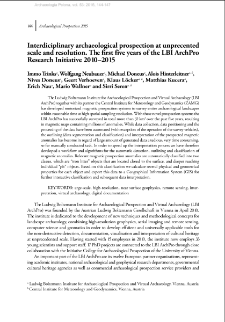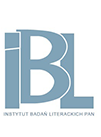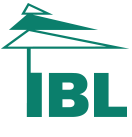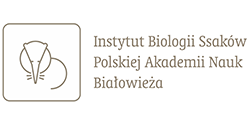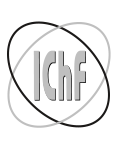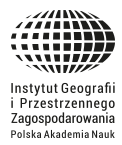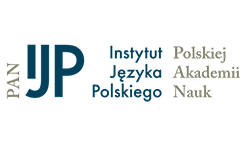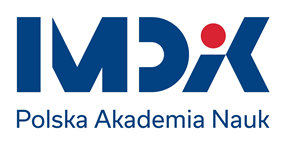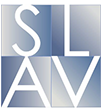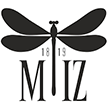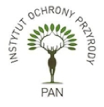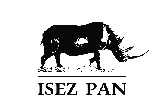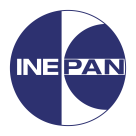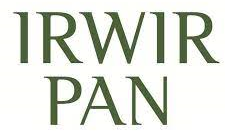- Search in all Repository
- Literature and maps
- Archeology
- Mills database
- Natural sciences
Advanced search
Advanced search
Advanced search
Advanced search
Advanced search

Object
Title: Interdiciplinary archaeological prospection at unprecented scale and resolution. The first five years of the LBI ArchPro Research Initiative 2010-2015
Twórca:
Trinks, Immo ; Neubauer, Wolfgang ; Doneus, Michael ; Hinterleitner, Alois ; Doneus, Nives ; Verhoeven, Geert ; Löcker, Klaus ; Kucera, Matthias ; Nau, Erich ; Wallner, Mario ; Seren, Sirri
Data wydania/powstania:
Typ zasobu:
Inny tytuł:
Archaeologia Polona Vol. 53 (2015)
Wydawca:
Institute of Archaeology and Ethnology Polish Academy of Sciences
Miejsce wydania:
Opis:
Typ obiektu:
Abstrakt:
The Ludwig Boltzmann Institute for Archaeological Prospection and Virtual Archaeology (LBI ArchPro) together with its partner the Central Institute for Meteorology and Geodynamics (ZAMG) has developed motorized magnetic prospection systems to survey entire archaeological landscapes within reasonable time at high spatial sampling resolution. With these novel prospection systems the LBI ArchPro has successfully surveyed in total more than 32 km2 over the past five years, resulting in magnetic maps containing millions of anomalies. While data collection, data positioning and the processing of the data have been automated (with exception of the operation of the survey vehicles), the outlining (data segmentation and classification) and interpretation of the prospected magnetic anomalies has become in regard of large amount of generated data a tedious, very time consuming, so far manually conducted task. In order to speed up the interpretation process we have therefore developed a workflow and algorithms for the automatic detection, outlining and classification of magnetic anomalies. Relevant magnetic prospection anomalies are automatically classified into two classes, which are “iron litter” objects that are located closed to the surface, and deeper reaching individual “pit” objects. Based on this classification we calculate several physical and geometrical properties for each object and export this data to a Geographical Information System (GIS) for further interactive classification and subsequent data interpretation
Bibliografia:
http://archpro.lbg.ac.at
Czasopismo/Seria/cykl:
Tom:
Strona pocz.:
Strona końc.:
Szczegółowy typ zasobu:
Format:
Identyfikator zasobu:
oai:rcin.org.pl:85956 ; 0066-5924
Źródło:
IAiE PAN, call no. P 357 ; IAiE PAN, call no. P 358 ; IAiE PAN, call no. P 356 ; click here to follow the link
Język:
Prawa:
Creative Commons Attribution BY-SA 3.0 PL license
Zasady wykorzystania:
Copyright-protected material. [CC BY-SA 3.0 PL] May be used within the scope specified in Creative Commons Attribution BY-SA 3.0 PL license, full text available at: ; -
Digitalizacja:
Institute of Archaeology and Ethnology of the Polish Academy of Sciences
Lokalizacja oryginału:
Library of the Institute of Archaeology and Ethnology of the Polish Academy of Sciences
Dofinansowane ze środków:
Dostęp:
Object collections:
- Digital Repository of Scientific Institutes > Partners' collections > Institute of Archeology and Ethnology PAS > Institute Publications
- Digital Repository of Scientific Institutes > Partners' collections > Institute of Archeology and Ethnology PAS > Institute Publications > Current Journals
- Digital Repository of Scientific Institutes > Literature > Journals/Articles
- Digital Repository of Scientific Institutes > Partners' collections > Institute of Archeology and Ethnology PAS > Institute Publications > Current Journals > Archaeologia Polona
Last modified:
Mar 3, 2023
In our library since:
Nov 25, 2019
Number of object content downloads / hits:
130
All available object's versions:
https://rcin.org.pl./publication/87084
Show description in RDF format:
Show description in RDFa format:
Show description in OAI-PMH format:
Objects Similar
Wallner, Mario Löcker, Klaus Neubauer, Wolfgang Doneus, Michael Jansa, Viktor Verhoeven, Geert Trinks, Immo Seren, Sirri Gugl, Christian Humer, Franz
Trinks, Immo Tsokas, Gregory Verhoeven, Geert Löcker, Klaus Kucera, Matthias Nau, Erich Wallner, Mario Tsourlos, Panagiotis George, Vargemezis Neubauer, Wolfgang
Seren, Sirri Totsching, Ralf Hinterleitner, Alois Löcker, Klaus Ladstätter, Sabine
Wess, Michael Atzberger, Clement Doneus, Michael Verhoeven, Geert
Hinterleitner, Alois Kastowsky-Priglinger, Karolin Löcker, Klaus Neubauer, Wolfgang Pregesbauer, Michael Sandici, Vlad Trinks, Immo Wallner, Mario
Schneidhofer, Petra Nau, Erich Hinterleitner, Alois Lugmayer-Klimczyk, Agata Bill, Jan Gansum, Terje Neubauer, Wolfgang Paasche, Knut Seren, Sirri Draganits, Erich Trinks, Immo
Löcker, Klaus Kucera, Matthias Trinks, Immo Neubauer, Wolfgang
Shrivastava, Neeti Kumar Rai, Praveen

 INSTYTUT ARCHEOLOGII I ETNOLOGII POLSKIEJ AKADEMII NAUK
INSTYTUT ARCHEOLOGII I ETNOLOGII POLSKIEJ AKADEMII NAUK
 INSTYTUT BADAŃ LITERACKICH POLSKIEJ AKADEMII NAUK
INSTYTUT BADAŃ LITERACKICH POLSKIEJ AKADEMII NAUK
 INSTYTUT BADAWCZY LEŚNICTWA
INSTYTUT BADAWCZY LEŚNICTWA
 INSTYTUT BIOLOGII DOŚWIADCZALNEJ IM. MARCELEGO NENCKIEGO POLSKIEJ AKADEMII NAUK
INSTYTUT BIOLOGII DOŚWIADCZALNEJ IM. MARCELEGO NENCKIEGO POLSKIEJ AKADEMII NAUK
 INSTYTUT BIOLOGII SSAKÓW POLSKIEJ AKADEMII NAUK
INSTYTUT BIOLOGII SSAKÓW POLSKIEJ AKADEMII NAUK
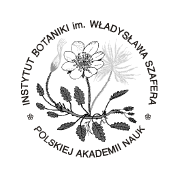 INSTYTUT CHEMII FIZYCZNEJ PAN
INSTYTUT CHEMII FIZYCZNEJ PAN
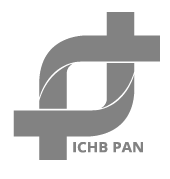 INSTYTUT CHEMII ORGANICZNEJ PAN
INSTYTUT CHEMII ORGANICZNEJ PAN
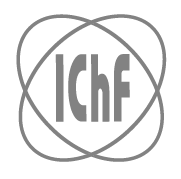 INSTYTUT FILOZOFII I SOCJOLOGII PAN
INSTYTUT FILOZOFII I SOCJOLOGII PAN
 INSTYTUT GEOGRAFII I PRZESTRZENNEGO ZAGOSPODAROWANIA PAN
INSTYTUT GEOGRAFII I PRZESTRZENNEGO ZAGOSPODAROWANIA PAN
 INSTYTUT HISTORII im. TADEUSZA MANTEUFFLA POLSKIEJ AKADEMII NAUK
INSTYTUT HISTORII im. TADEUSZA MANTEUFFLA POLSKIEJ AKADEMII NAUK
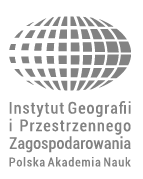 INSTYTUT JĘZYKA POLSKIEGO POLSKIEJ AKADEMII NAUK
INSTYTUT JĘZYKA POLSKIEGO POLSKIEJ AKADEMII NAUK
 INSTYTUT MATEMATYCZNY PAN
INSTYTUT MATEMATYCZNY PAN
 INSTYTUT MEDYCYNY DOŚWIADCZALNEJ I KLINICZNEJ IM.MIROSŁAWA MOSSAKOWSKIEGO POLSKIEJ AKADEMII NAUK
INSTYTUT MEDYCYNY DOŚWIADCZALNEJ I KLINICZNEJ IM.MIROSŁAWA MOSSAKOWSKIEGO POLSKIEJ AKADEMII NAUK
 INSTYTUT PODSTAWOWYCH PROBLEMÓW TECHNIKI PAN
INSTYTUT PODSTAWOWYCH PROBLEMÓW TECHNIKI PAN
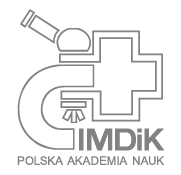 INSTYTUT SLAWISTYKI PAN
INSTYTUT SLAWISTYKI PAN
 SIEĆ BADAWCZA ŁUKASIEWICZ - INSTYTUT TECHNOLOGII MATERIAŁÓW ELEKTRONICZNYCH
SIEĆ BADAWCZA ŁUKASIEWICZ - INSTYTUT TECHNOLOGII MATERIAŁÓW ELEKTRONICZNYCH
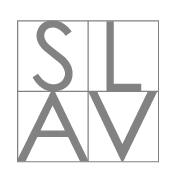 MUZEUM I INSTYTUT ZOOLOGII POLSKIEJ AKADEMII NAUK
MUZEUM I INSTYTUT ZOOLOGII POLSKIEJ AKADEMII NAUK
 INSTYTUT BADAŃ SYSTEMOWYCH PAN
INSTYTUT BADAŃ SYSTEMOWYCH PAN
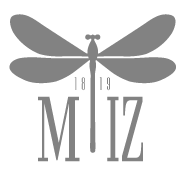 INSTYTUT BOTANIKI IM. WŁADYSŁAWA SZAFERA POLSKIEJ AKADEMII NAUK
INSTYTUT BOTANIKI IM. WŁADYSŁAWA SZAFERA POLSKIEJ AKADEMII NAUK
